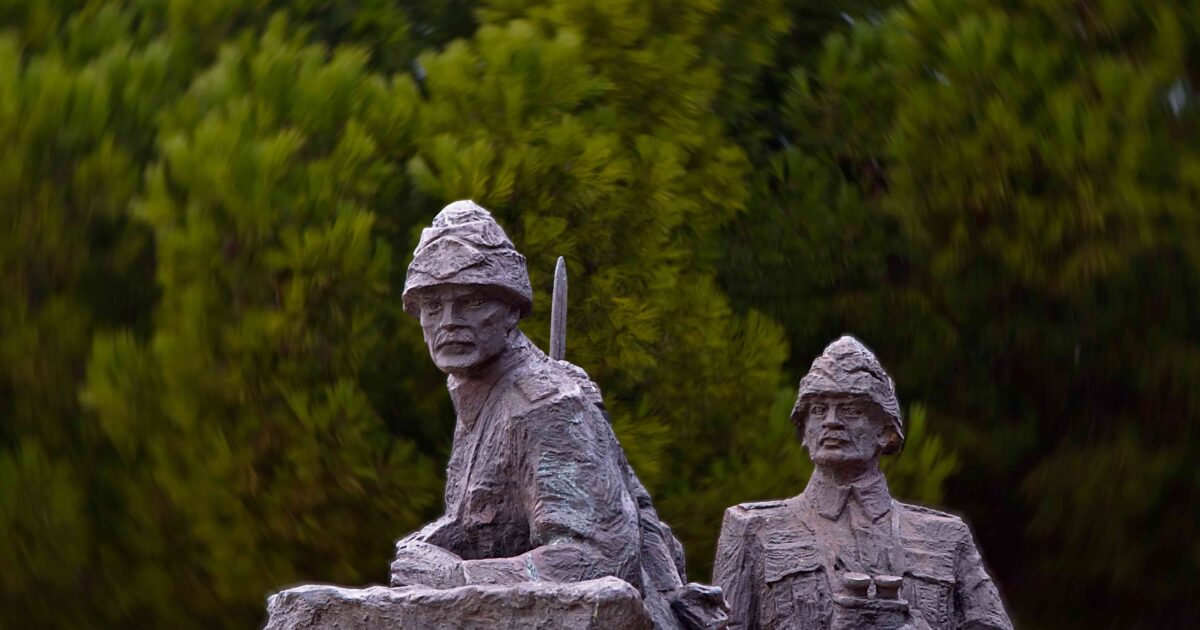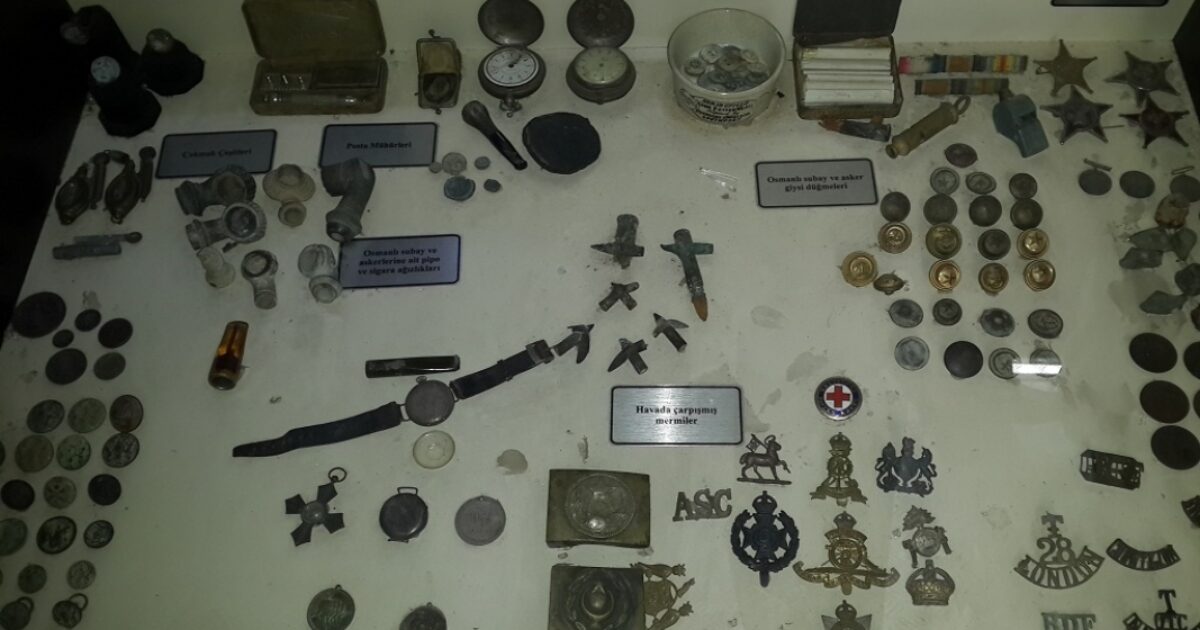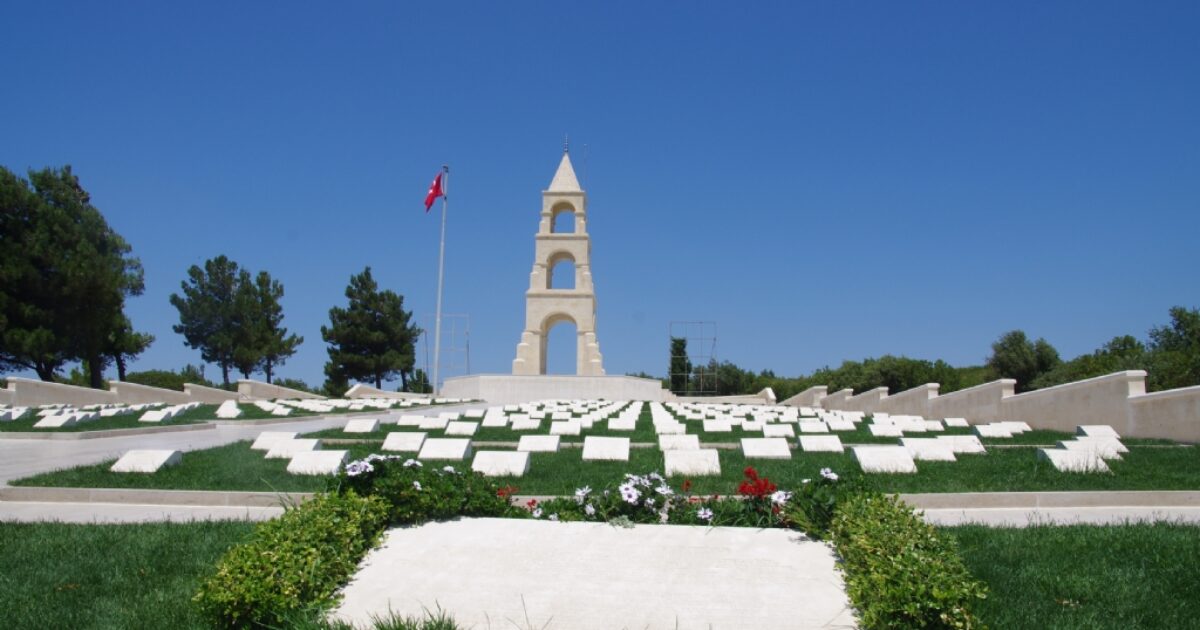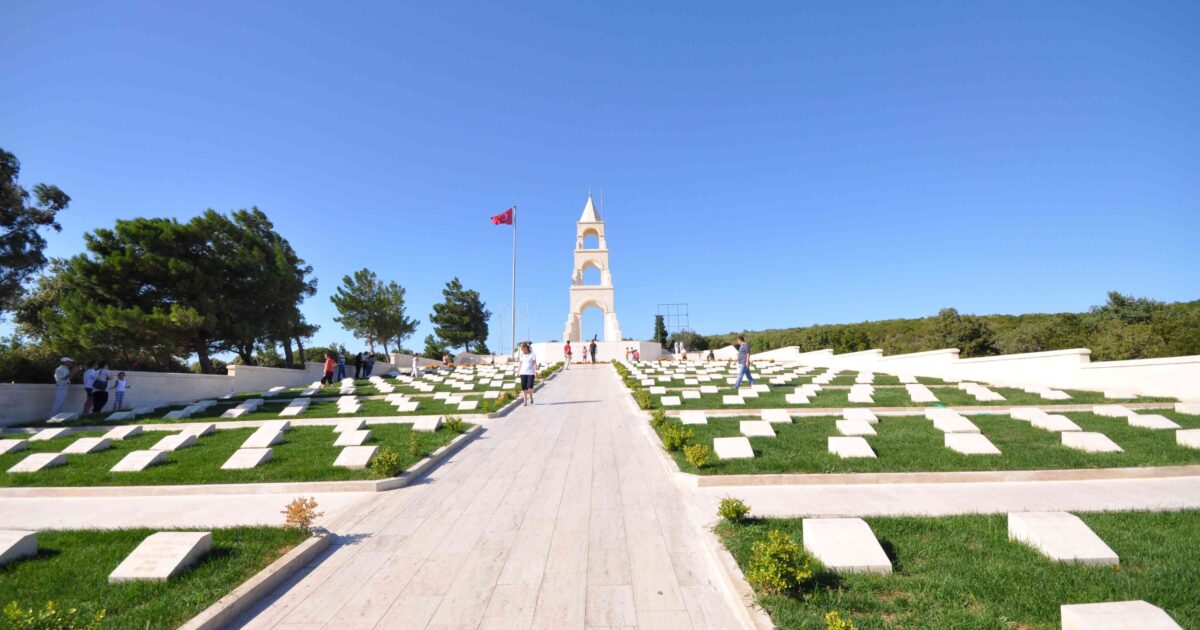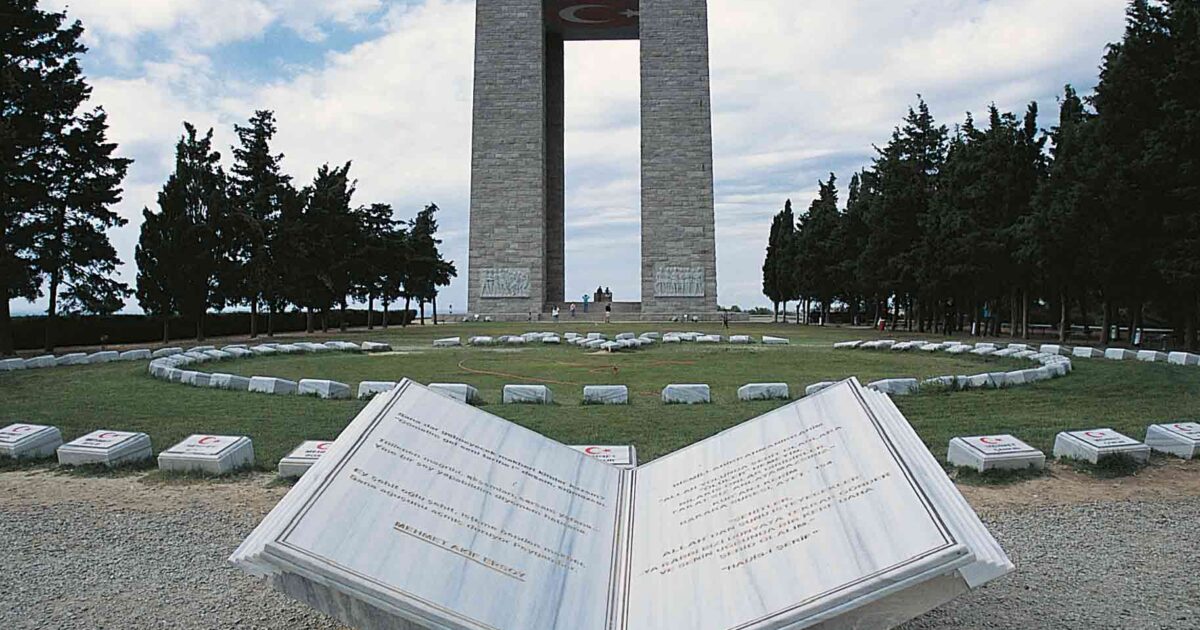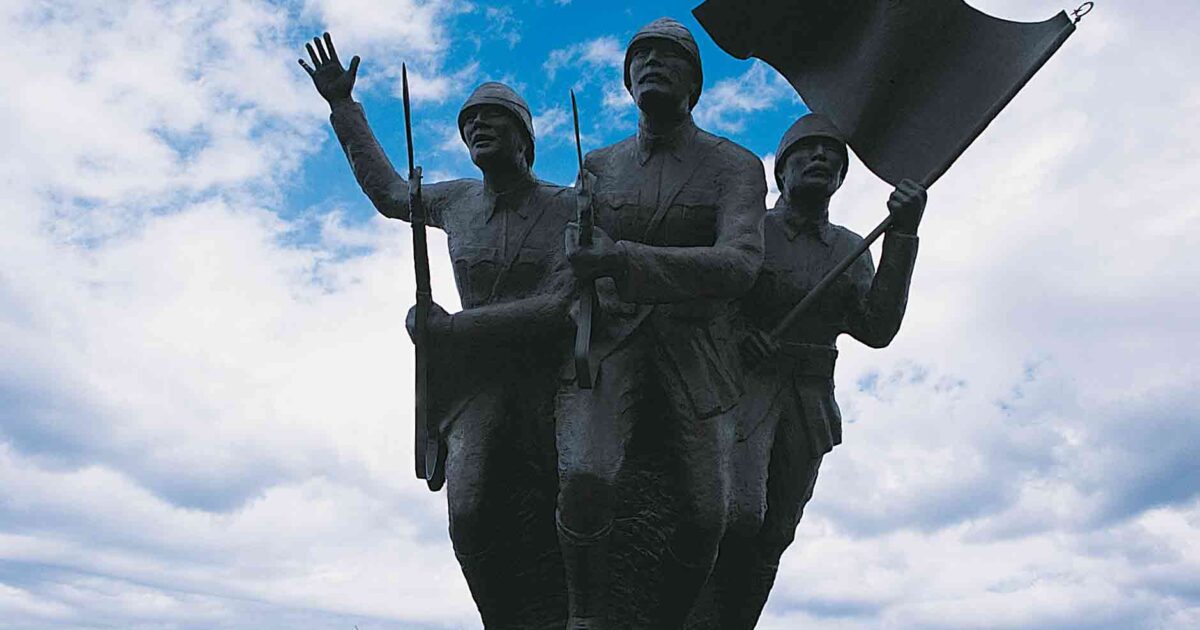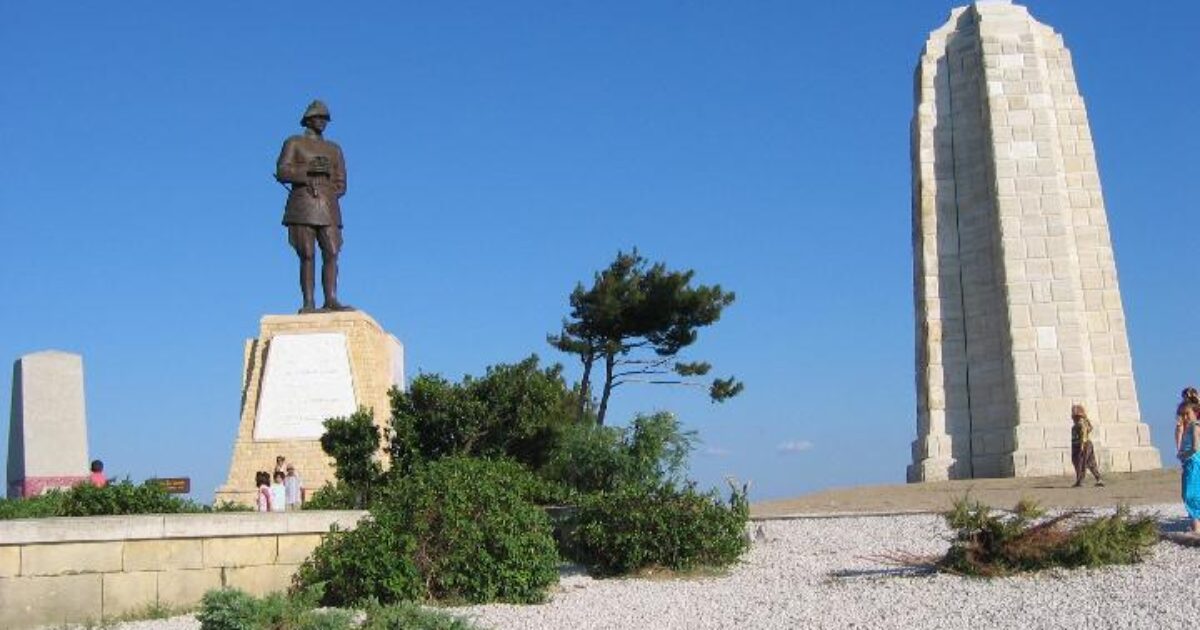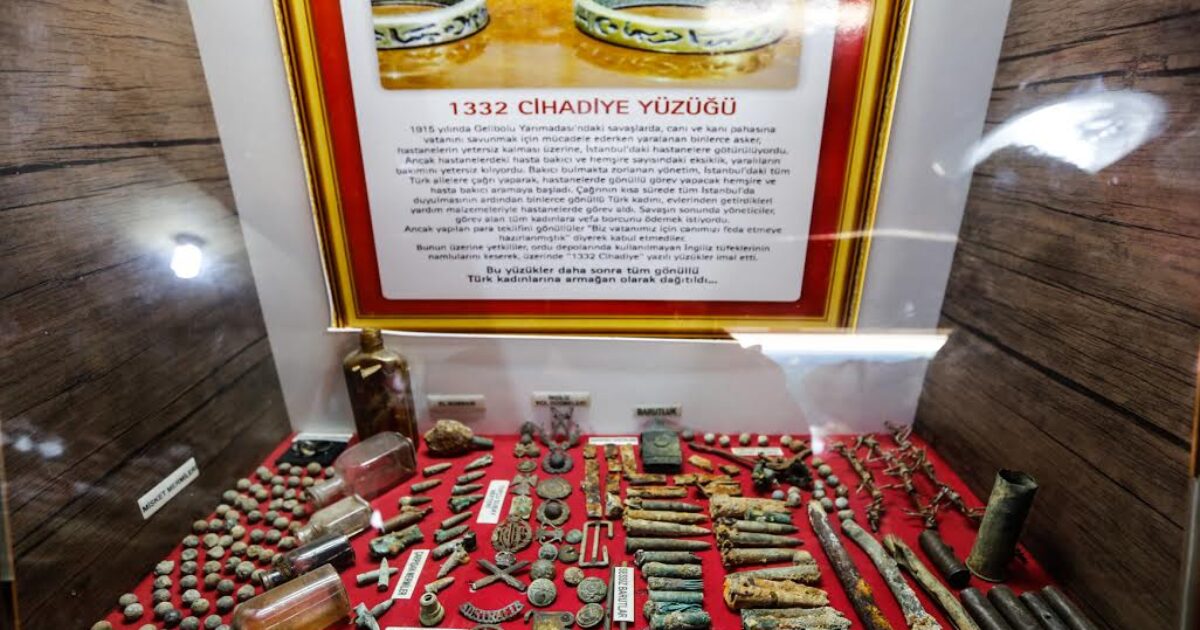Gallipoli campaign can be considered as one of the most ciritcal event in the first world war and has a long and memorable history. The peninsula’s rugged landscape and historic towns provide the backdrop to the battlefields of 1915, places of heroism and sacrifice which are of immense national significance to Turks, Australians and New Zealanders.
Gallipoli wars can be examined in two phases; sea wars and land wars. The Allied objectives in the Gallipoli Campaign of 1915 were, by capturing Istanbul, to force Turkey out of the war, to secure an ice-free sea supply route to Russia and to open another front against Germany and Austria-Hungary. The campaign fell into four phases, the first being the naval operations of early 1915 culminating on March 18th, in the unsuccessful attempt by battleships to force the Dardanelles. By late 1914, the British and French governments had agreed it was necessary to gain control of the straits known as the Dardanelles This would allow for co-ordinated deployment of Russian and allied troops. They approved a naval campaign, aimed at destroying or capturing Turkish fortifications along the length of the Dardenelles in order to open a secure passage for the navy on their way to Istanbul , capital of the Ottoman Government. However, the role of small Turkish mine-layer Nusrat by laying mines in the morning of March 18th had changed the destiny of the naval battle. During this operation three ships from the Allied Fleet had been sunk and three badly damaged. Almost eighteen battleships entered the straits such as Queen Elizabeth, Lord Nelson, Agamemmon, Inflexible, Ocean, Irresistible, Prince George and Majestic from Britain and the Gaulois, Bouvet and Suffren from France. Overall, three ships had been sunk and three more had been severely damaged such as Bouvet, Irresistable, and Ocean.
After the failure in the navy operations, land operation coupled with naval bombardements was decided to perform in order to capture the peninsula. The Anzac Corps (Australian and New Zealand Army Corps), the 29th British Territorial Infantry Division, the 1st Royal Naval Infantry Division, the 29th Indian Infantry Brigade and the French 1st Infantry Division were to take part in this action.
At dawn on the 25th April, the Seddulbahir coast was seen to be surrounded by several ships and landing crafts. At 5.30 am. a hellish fire was opened from the allied warships. Bombardment from the sea held the tip of the peninsula under fire from three sides. The 29th British Infantry Division attempted to move into the land. The defending forces broke the first wave of the invading forces with success. Then, with the reinforcements, which were later brought in, the operation was extended on the land without much success.
The area chosen by the Anzac Corps as a landing area was the coast to the north of Kabatepe. However, the Anzacs had landed in the steep, inaccessible area of Ariburnu (later it was called as Anzac Cove) due to their boats having been carried by the strong current. The other reason was claimed as the Turkish forces’ trick by changing location of the sign of Allied forces to an rough cove, which is hard to access. The Anzac attack began at 4.30 on 25th April. They landed at Ariburnu in the form of a surprise attack. Heavy fights had occured between ANZACs and Turkish Troops. The Anzacs were in great difficulty to defend their positions with the latest assaults. The allied commander decided to evacuate his forces into Hamilton. Due to the lack of necessary vehicles, the evacuation move was suspended. Dig-in and defend order was given instead. As time passed both sides were gradually reinforced. Fierce Anzac assaults on Ariburnu continued steadily and the fighting went on until the end of May. The opposing forces were extremely close to each oth
British Army Corps began landing on the night of 6-7 August, to start the final attack against the Turkish troops aproximately on the 9th of August. Due to the hot weather and exhaustion of the British soldiers, 9th corps spend a day on the beach front instead of moving to the target hills immediately. During this time two Turkish divisions were transferred to the front with Mustafa Kemal as commander. One of these divisions pushed the 9th corps into the sea while the other one prevented the Anzacs to reach to the battle front.
Thus the allied forces clearly saw that no possibility remained either of breaking the Turkish defense in the Dardanelles or of achieving any result in the Gallipoli Campaign, above all of achieving their ambition of taking Istanbul. On 20th December 1915 they ordered the evacuation of Ariburnu - Anafartalar and on the 9th January 1916 Seddulbahir.
The results of the the Gallipoli campaign was appalling. 26,111 Australian casualties of whom 8,141 were killed. In addition, New Zealand suffered 7,571 casualties of whom 2,431 were killed. Britain endured 21,255 dead over 120,000 casualties, while French troops lost about 10,000 over 27,000 casualties. India and Newfoundland lost 1350 and 49 soldiers respectively. The Turkish lost about 80.000 soldiers over 220,000 casualties .Today Gallipoli peninsula serves as a national park nearby Canakkale, where several war memorials and cemetaries belonging to Turks, Australians, New Zealanders, British and French reflect the drama of those days. Every April the 25th, thousands of people from those countries meet here to commemorate the Gallipoli Campaign. Scuba-diving to the shipwrecks is also possible in the cool water of lovely Dardanelles.
Guide - Çanakkale
- Canakkale Turkey Travel Guide
- Things to do in Canakkale
- Places to Visit in Canakkale
- Places to Visit around Canakkale
- Gallipoli Travel Guide
- The Temple of Apollon Travel Guide
- Gallipoli Peninsula National Park
- Bozcaada Travel Guide
- Gokceada Travel Guide
- Mount IDA
- Assos Travel Guide
- Troia Travel Guide
- Alexandria Troas Travel Guide
- Cimenlik Castle
- Kilitbahir Fortress
- Map & Direction
- Transportation to Canakkale by Bus
- Transportation to Canakkale by Flight
- Transportation to Canakkale by Car
- Transportation to Canakkale by Ferry
- Transportation to Canakkale by Fast Ferry
- Transportation to Bozcada
- Transportation to Gokcecada
- Canakkale Hotels
- Gallipoli Hotels
- Troy Hotels
- Gelibolu Mevlevihanesi
- Troy Tours
- Troy Tours
- Camping
